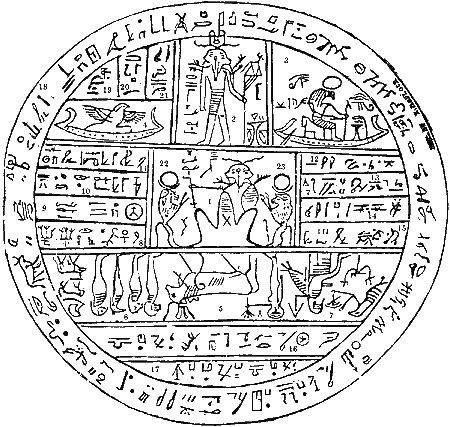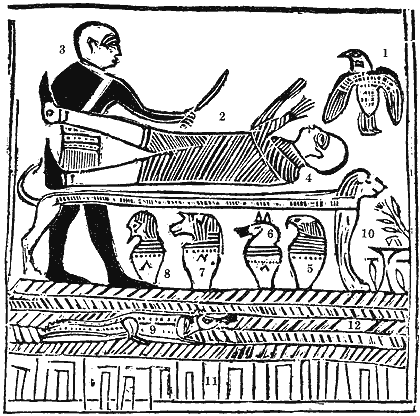 Close Topic Options
Close Topic OptionsFamiliarities: Egyptian Writings - The Facsimiles
Familiarities Egyptian Writings Facsimiles - Mormon Doctrine Studies - Posted: 13th Feb, 2016 - 2:32pm
- Location:
- International Discussions
- ➢
- ➢ Discuss
- ➢ General Religious Beliefs
- ➢ Mormon Doctrine Studies
Familiarities: Egyptian Writings - The Facsimiles
Familiarities: Egyptian Writings
There is a lot of critique on the net about the scrolls of Abraham translaed by Joseph Smith. I have started this thread as an open based research into the familiarities between the Egyptian writings and scrolls and those that are realted to the Gospel.
Below is the Facsimile No.2 from The Pearl of Great Price, The Church of Jesus Christ of Latter-Day Saints.

The interpretations of parts of these symbols are also given within the Pearl of Great Price. Some are held back as it is not proper to reveal at this time.
More to come...
What are your findings?
Facsimiles - Writings Egyptian Familiarities
Below is Facsimile 1 and the explanation is given based on the interpretation within the Pearl of Great Price:
Fig. 1. The Angel of the Lord.
Fig. 2. Abraham fastened upon an altar.
Fig. 3. The idolatrous priest of Elkenah attempting to offer up Abraham as a sacrifice.
Fig. 4. The altar for sacrifice by the idolatrous priests, standing before the gods of Elkenah, Libnah, Mahmackrah, Korash, and Pharaoh.
Fig. 5. The idolatrous god of Elkenah.
Fig. 6. The idolatrous god of Libnah.
Fig. 7. The idolatrous god of Mahmackrah.
Fig. 8. The idolatrous god of Korash.
Fig. 9. The idolatrous god of Pharaoh.
Fig. 10. Abraham in Egypt.
Fig. 11. Designed to represent the pillars of heaven, as understood by the Egyptians.
Fig. 12. Raukeeyang, signifying expanse, or the firmament over our heads; but in this case, in relation to this subject, the Egyptians meant it to signify Shaumau, to be high, or the heavens, answering to the Hebrew word, Shaumahyeem.

Familiarities: Egyptian Writings - The Facsimiles (Hover)
Familiarities: Egyptian Writings - The Facsimiles Studies Doctrine Mormon
Church History Library “Foundations of Faith” Egyptian Collections Exhibit
The Church History Library has recently placed several new items on display in its Foundations of Faith exhibit. An ancient papyrus, a record of the first general conference, and the handmade sketch that accelerated the construction of temples over the past two decades are among the items that make the Church’s organization and growth relevant to visitors today. Ref. Source 3q.
 TOPIC: Familiarities: Egyptian Writings - The Facsimiles
TOPIC: Familiarities: Egyptian Writings - The Facsimiles